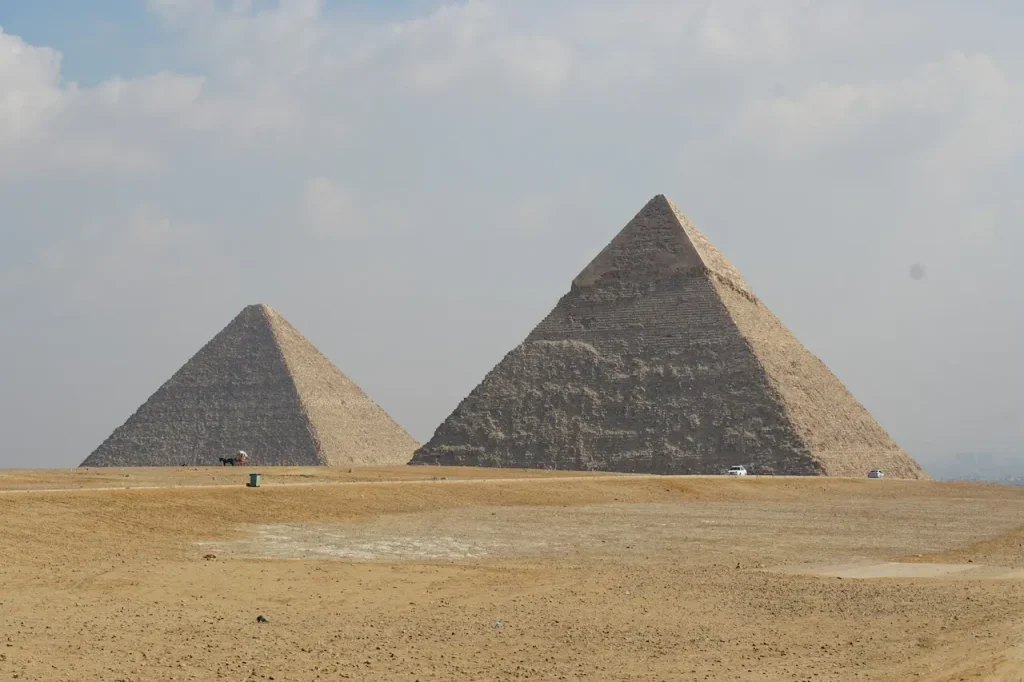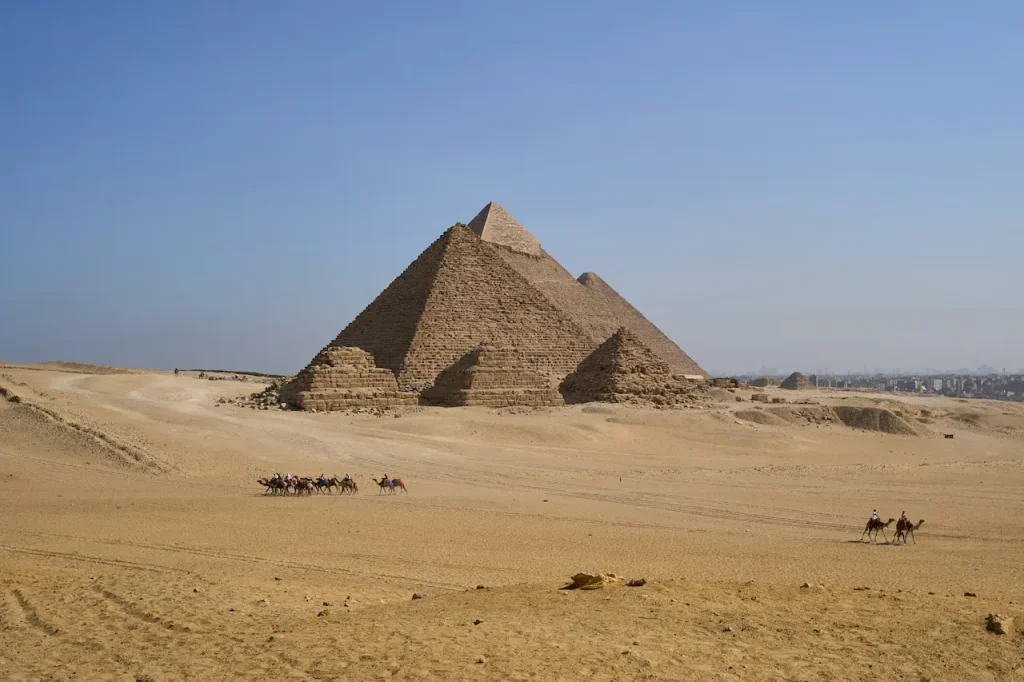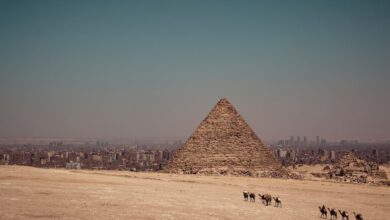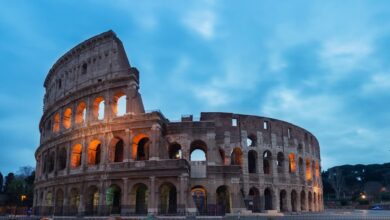Imagine the majestic symmetry of the Pyramid of the Sun as it looms over the highland valley of Mexico. Imagine the grand sweep of the Avenue of the Dead flanked with ancient courtyards and bustling neighbourhoods. Silent pyramids are also present. All of these tell stories of an incredible and enigmatic civilisation. Teotihuacan is the “City of the Gods,” once a place of life, rituals, commerce and mystery, now silent beneath centuries of dust.
Pyramids of Death
1. Teotihuacan, A City Carved From Highlands
Teotihuacan is located in the State of Mexico, about 50 km northeast of Mexico City. It’s nestled inside a high-altitude basin. This valley, which rises nearly 2,300 metres above sea level and shelters one of the largest urban centres in the pre-Columbian Americas, is a stunning example of pre-Columbian architecture. It was a megacity at its peak around 500 CE. It covered approximately 20 km2 (8 sq mi), and it housed between 125,000 and 200,000 people.
This is not the desert. The city thrived instead amid volcanic soils and cultivated fields. Cerro Gordo, an extinct peak visible from Teotihuacan and a touchstone both for orientation and reverence, was a distant extinct peak.

2. City Planning & Architectural Poetry
Teotihuacan is a monument to civic order and cosmic vision. The city’s layout is based on a grid that is oriented 15 degrees east of true North. This alignment may be linked to distant mountains or astronomical events.
It unifies the cityscape, linking the Pyramid of the Sun, the Pyramid of the Moon, the Citadel, and the Temple of the Feathered Serpent–Teotihuacan’s sacred spine. It unifies the cityscape, linking the Pyramid of the Sun, the Pyramid of the Moon, the Citadel, and the Temple of the Feathered Serpent, Teotihuacan’s sacred spine. Pyramid of the Sun: Built around 200 AD, it’s one of the largest pyramids in the Americas–65.5 m high, with a base of approximately 220 x 230 m. The lime plaster cladding was once covered with colourful murals, including jaguars, stars and serpentine motifs.
- Pyramid of the Moon: It is a 43-meter-tall pyramid that mirrors the presence of the sun at the north end of the avenue. The seven layers of the pyramid culminate in a platform facing Cerro Gordo.
- Temple the Feathered Snake (Quetzalcoatl). This ornate pyramid is adorned with stone serpents, a testament to architectural and ritual mastery.
Beyond monuments, the city brims with apartment compounds–multitudes of 2,000 to 2,300 large courtyard dwellings that housed up to 100 people each. Many of these walls contained brewing shops, cisterns and burial spaces, all enclosed by protective walls.
3. The People – Craft, Culture & Convergence
Teotihuacan was not only a thriving city because of its stunning architecture, but also due to its multiethnic makeup. Archaeological evidence reveals residents of the Zapotec region, as well as those from Mixtec, Otomi and Totonac. Each ethnic group may have had its specialised artisans, such as ceramicists and obsidian workers, scribes and merchants.
The city was fed by agriculture: maize and beans, squashes, avocados, chilis, and even the rich cacao beans that were reserved for nobles. Obsidian, a volcanic glass valued for rituals and tools, served as a second economic lifeblood. It symbolised both everyday life and the power of elites.
Religion is woven into the fabric of daily life. Teotihuacanos had a pantheon of gods: the Storm God Tlaloc, the Feathered Serpent Quetzalcoatl and even the Great goddess of fertility and creation. State ceremonies were punctuated by human and animal sacrifices. Sometimes in large numbers, like the famous rituals of the Temple of the Feathered Serpent and the Pyramid of the Moon.
4. The Collapse – Flames, Famine and Forgotten Voices
550 to 600 CE is the time when signs of unrest begin to emerge. Elite structures are burned along the Avenue of the Dead, but common homes are spared, suggesting that the uprising may not have been external.
Archaeologists have also detected ecological stress. Malnourished children and demographic decline, as well as droughts triggered by climate shifts and volcanic eruptions around 535 CE. These stressors could have weakened the elites’ grip and sparked revolt.
By the year 750 CE, Teotihuacan was largely abandoned. Its grand plazas were silent. We rely on charred statues and charred bricks in the absence of written archives to piece together a lost culture.

5. Legacy and Rediscovery
The Aztecs were astonished and mystified when they came across the ruins centuries later. The Aztecs named it Teotihuacan, “the place where the gods were born”, and incorporated it into their cosmology. The city was mythologised by pilgrims who left offerings on top of the pyramids.
Teotihuacan is still one of Mexico’s top heritage sites, with over 1.3 million visitors expected in 2024. It is also a UNESCO World Heritage site and a research frontier.
Discoveries continue: a Teotihuacan-style altar found deep in Guatemala’s Tikal confirms cultural exchange across Mesoamerica–evidencing sacrifices, Storm God imagery, and cross-regional diplomacy between 300 and 500 CE.
In the Shadow of Giants
The wind is carrying echoes of the hurried artisans, the chanting of the ritual drums and the chiselled prayer to the sun and storm gods as you walk the Avenue of the Dead. The Pyramids are silent, but they’re not empty.
Teotihuacan, a city that was built by many: farmers, artists and priests, as well as migrants and dreamers, was the work of many people. It was built with celestial accuracy, perhaps governed by councils instead of kings. And its rise and falls speak both to human brilliance as well as human fragility.
This is the meaning of “Pyramids of Death”, a dramatic title that’s also sincere. The title is not only a reference to destruction, but also to cycles of transformation and the dangerous power of collective ambition. Teotihuacan is a story that remains open, from its volcanic cradle, to its fade, ashen fields. It’s a riddle, and a reminder rooted on Earth, but reaching towards heaven.



